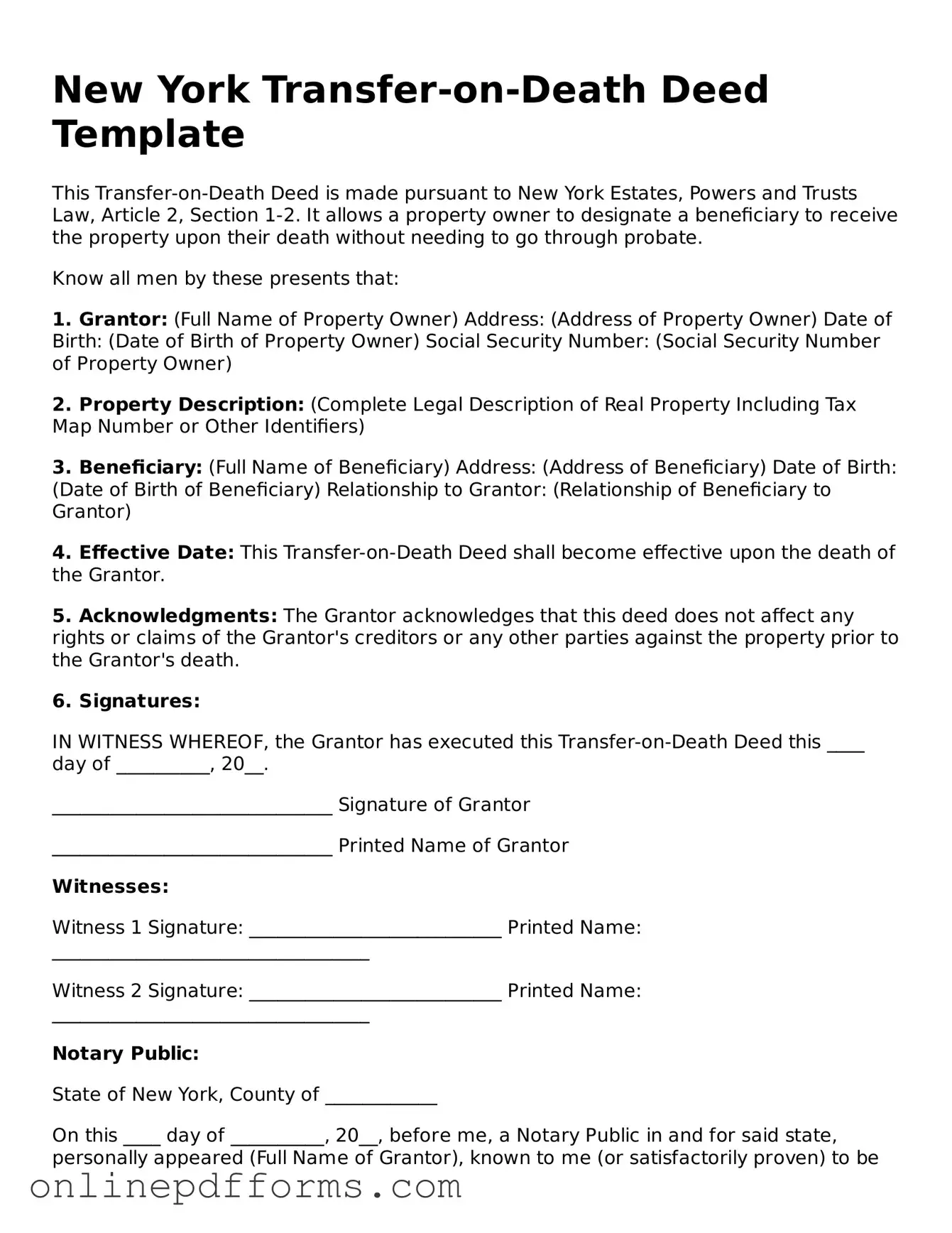The New York Transfer-on-Death Deed (TODD) allows property owners to transfer their real estate to beneficiaries upon their death, without the need for probate. This document is similar to a Last Will and Testament, which also designates how a person's assets should be distributed after their passing. However, unlike a will, which goes through the probate process, a TODD allows for a more straightforward transfer, enabling beneficiaries to take ownership immediately upon the owner's death without additional court proceedings.
Another document akin to the TODD is the Revocable Living Trust. This trust allows individuals to manage their assets during their lifetime and specify how those assets should be distributed upon their death. Like the TODD, a revocable living trust avoids probate, providing a seamless transition of property to beneficiaries. However, a trust can also offer additional benefits, such as asset management during incapacity and privacy, as it does not become a matter of public record.
The Beneficiary Designation form is another important document that shares similarities with the TODD. This form is commonly used for financial accounts, such as life insurance policies or retirement accounts, allowing account holders to name beneficiaries who will receive the assets upon their death. Like the TODD, beneficiary designations bypass probate, ensuring that the intended recipients receive their inheritance quickly and efficiently.
A Joint Tenancy Agreement is also comparable to a Transfer-on-Death Deed. This agreement allows two or more individuals to own property together with rights of survivorship. When one owner passes away, their share automatically transfers to the surviving owner(s), much like how a TODD operates. Both documents provide a means of transferring property outside of probate, but a joint tenancy can complicate matters if one owner wishes to sell their share or if disputes arise among co-owners.
The Lady Bird Deed, or Enhanced Life Estate Deed, is another estate planning tool that resembles the TODD. This deed allows property owners to retain control over their property during their lifetime while designating beneficiaries to receive the property upon death. Similar to a TODD, a Lady Bird Deed avoids probate, but it also allows the original owner to sell or mortgage the property without the beneficiaries' consent, providing greater flexibility.
A Power of Attorney (POA) can be seen as related to the TODD in terms of managing property. A POA grants someone the authority to act on behalf of another person in financial matters, which can include transferring property. While the TODD specifically addresses the transfer of real estate upon death, a POA can be used to manage property during the owner’s lifetime, making it a vital tool for those who may become incapacitated.
The Affidavit of Heirship serves a different but related purpose. This document is used to establish the heirs of a deceased individual when there is no will. While it does not transfer property like a TODD, it can help clarify who inherits property and may be used in conjunction with a TODD if the property owner dies without a clear designation of beneficiaries in other documents.
In the realm of vehicle transactions, having the right documentation is crucial to ensure a smooth transfer of ownership, which is where the importance of Auto Bill of Sale Forms becomes evident. These forms not only capture the essential details of the sale but also safeguard both parties against potential disputes, making the buying and selling process more secure and transparent.
Finally, the Small Estate Affidavit is relevant for those dealing with estates that fall below a certain value threshold. This document allows heirs to claim assets without going through probate. Similar to a TODD, it simplifies the transfer process and can expedite the distribution of assets. However, it is limited to smaller estates, making the TODD a more versatile option for transferring real property regardless of its value.
